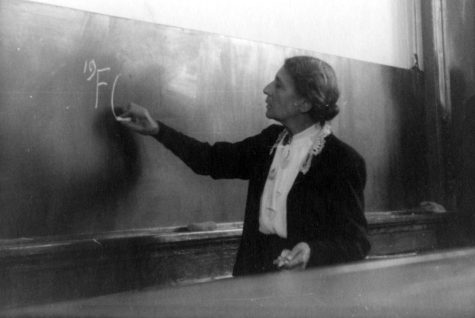
WHM: Women In Science
Women in science have long been overlooked, shamed, and discredited. Because of this, their work and accomplishments have been hidden from history, overshadowed by the long-standing sexism in the scientific community. Their stories are just now being uncovered. Here are some women who have made meaningful and often forgotten contributions to science:
- Maria Merian (1647-1717) Naturalist and scientific illustrator
Maria Merian studied the life cycle of butterflies. During her lifetime, scientists didn’t consider insects to be important, considering them to be “vile and disgusting.” Her claim to fame was her research on insect metamorphosis as well as her illustrations of them (which are still being used today!)
- Mary Anning (1799-1874) Paleontologist
When Anning was 12 years old, she and her younger brother found the first complete skeleton of an ichthyosaur. This discovery kick-started her career in fossil hunting. She went on to discover two more complete skeletons: One of a plesiosaur and one of a pterosaur.
- Lise Meitner (1878-1968) Physicist

Meitner’s physics aided in the discovery of nuclear fission. However, she was not credited for the discovery. Her partner, Otto Hahn, was the only one to receive the Nobel Prize.
- Alice Ball (1892-1916) Chemist
Ball was the first woman and African-American to receive her Masters’s degree at the University of Hawaii. During her time there, she revolutionized leprosy treatment by separating active ingredients in a certain type of oil. Before she could publish her results, she died and her work was published without credit to her. Luckily, Dr. Harry Hollman, who had asked her for assistance, publicly came out and credited Ball for her work.
- Elsie Widdowson (1906-2000) Nutritionist
Elsie Widdowson would self-inject various vitamins and minerals to study their effects. Widdowson’s results became key to the health of British soldiers during WWII. By her recommendations, the British army promoted a balanced diet and served bread fortified with chalk, for extra calcium. Her recommendations on how to have a healthy diet were the first to be backed by scientific research on food consumption.
- Rachel Carson (1907-1964) Marine Biologist
 Carson began her career working in the U.S Fish and Wildlife Service. After writing books and articles about ocean life, she became a full-time scientific writer. During her lifetime she worked to highlight the dangers of synthetic pesticides and wrote a book on them called Silent Spring. She was also a major contributor to the development of the EPA (Environmental Protection Agency), which oversees most of our environmental laws today.
Carson began her career working in the U.S Fish and Wildlife Service. After writing books and articles about ocean life, she became a full-time scientific writer. During her lifetime she worked to highlight the dangers of synthetic pesticides and wrote a book on them called Silent Spring. She was also a major contributor to the development of the EPA (Environmental Protection Agency), which oversees most of our environmental laws today.
- Gertrude B. Elion (1918-1999) Biochemist and Pharmacologist
Elion invented the first treatment for leukemia as well as the first immunosuppressive drug for organ transplants. After she retired in 1983, she oversaw the development of AZT, one of the first drugs for treating AIDS.
- Rosalind Franklin (1920-1958) Chemist
Rosalind Franklin was the first to take a photograph of DNA. This photo was sent to other scientists without her consent (namely James Watson and Francis Crick) who used her photo to deduce that DNA is formed in a double helix. She was mentioned only in the footnotes of their research papers and not given the credit she deserved.
- Marie Tharp (1920-2006) Geologist, Mathematician, Map-Maker
 Marie Tharp was one of the main individuals responsible for the discovery of the Mid-Atlantic Ridge as well as the acceptance of plate tectonics and continental drift. Women were not allowed aboard ships that collected data about the seafloor, so Tharp did her own research and drew countless maps that helped future scientists determine the topography of the ocean.
Marie Tharp was one of the main individuals responsible for the discovery of the Mid-Atlantic Ridge as well as the acceptance of plate tectonics and continental drift. Women were not allowed aboard ships that collected data about the seafloor, so Tharp did her own research and drew countless maps that helped future scientists determine the topography of the ocean.
- Katalin Kariko (1955-present) Biochemist
Katalin Kariko is an mRNA vaccine pioneer. Her research was the first step in the development of vitro transcribed mRNA for protein therapies. Without her research, the mRNA vaccine that has been so crucial in the fight against COVID-19 would not exist.
These women are just a few examples of the countless contributions that women have had in nearly every scientific field. It’s plain to see that without women, science as we know it today would not exist. It’s time to break down the sexism that is ingrained into all scientific professions and give credit where credit is due.